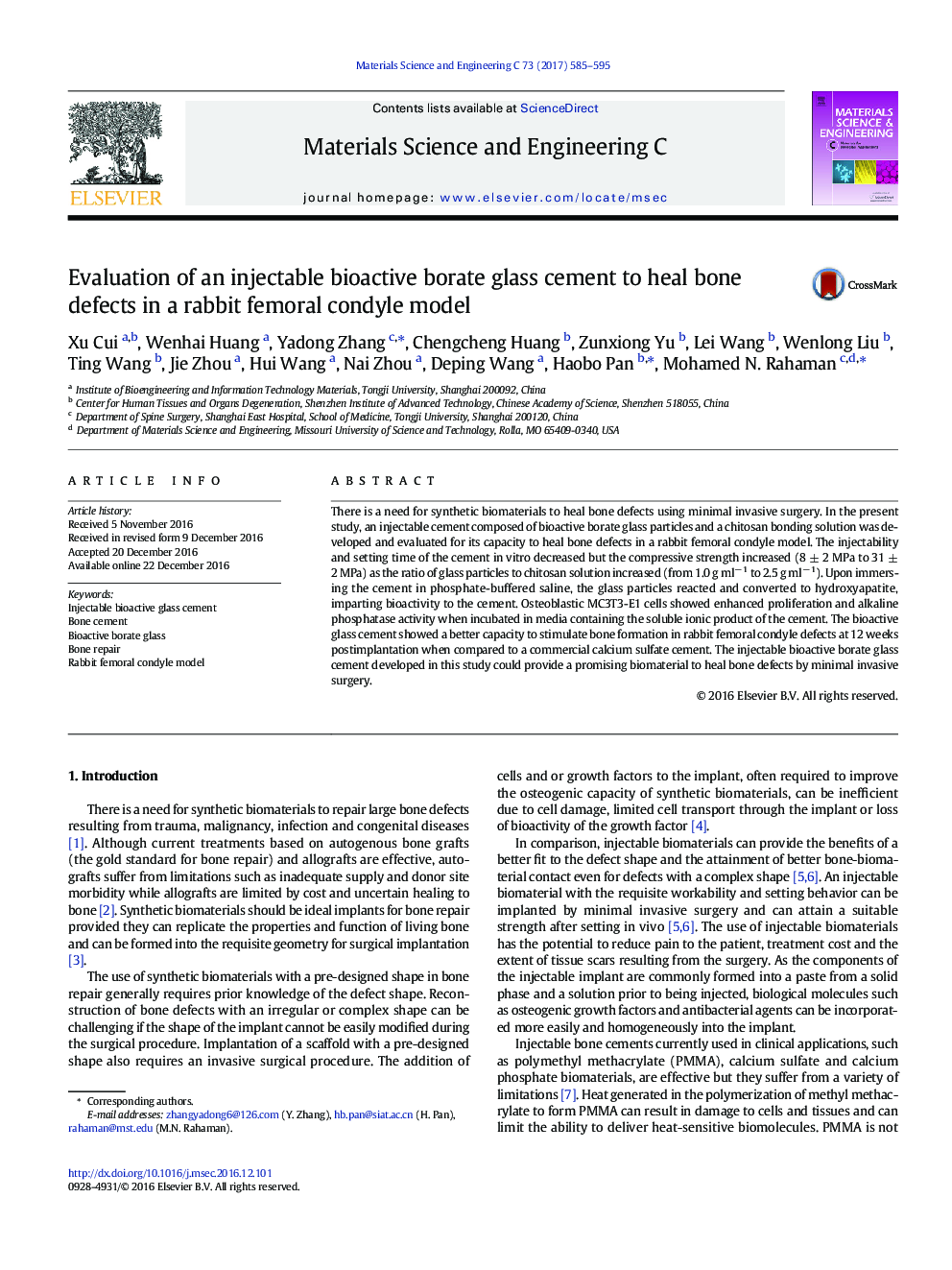| Article ID | Journal | Published Year | Pages | File Type |
|---|---|---|---|---|
| 5434965 | Materials Science and Engineering: C | 2017 | 11 Pages |
â¢New class of injectable bone cement composed of bioactive borate glass particles and chitosan bonding phase was created.â¢The cement is biocompatible and bioactive, and has a much lower temperature increase during setting than PMMA cement.â¢The cement has a more controllable degradation rate and higher strength over a longer time than calcium sulfate cement.â¢The cement showed a better ability to heal bone defects than calcium sulfate over a twelve-week implantation period.
There is a need for synthetic biomaterials to heal bone defects using minimal invasive surgery. In the present study, an injectable cement composed of bioactive borate glass particles and a chitosan bonding solution was developed and evaluated for its capacity to heal bone defects in a rabbit femoral condyle model. The injectability and setting time of the cement in vitro decreased but the compressive strength increased (8 ± 2 MPa to 31 ± 2 MPa) as the ratio of glass particles to chitosan solution increased (from 1.0 g mlâ 1 to 2.5 g mlâ 1). Upon immersing the cement in phosphate-buffered saline, the glass particles reacted and converted to hydroxyapatite, imparting bioactivity to the cement. Osteoblastic MC3T3-E1 cells showed enhanced proliferation and alkaline phosphatase activity when incubated in media containing the soluble ionic product of the cement. The bioactive glass cement showed a better capacity to stimulate bone formation in rabbit femoral condyle defects at 12 weeks postimplantation when compared to a commercial calcium sulfate cement. The injectable bioactive borate glass cement developed in this study could provide a promising biomaterial to heal bone defects by minimal invasive surgery.
